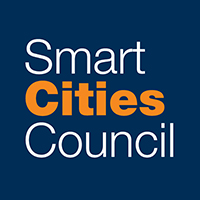What will it take to fill the smart cities workforce gap?
The technology employment market isn’t what it used to be. According to participants in a Smart Cities Week panel discussion focused on recruiting, training and retaining a skilled smart cities workforce, the days are gone when a promising but relatively unskilled applicant could land a position and learn what he or she needed to know over time on the job.
Now employers expect to see fully or almost fully-trained job candidates. And that means job and skills training programs need to change their tactics and re-define how they’re preparing people for jobs, what they’re teaching their students, and the level of support those students may need during training, particularly if they’re disadvantaged.
It’s a complex situation. What’s also reflected is that the participants in our panel discussion are flexible, willing to innovate and understand the economic benefits for both the students in their programs and the cities where they live and work.
Call it demand-based training?
“You can’t train and pray anymore,” was how Maryland Secretary of Labor, Licensing and Regulation Kelly Schulz described major changes in the tech jobs market and how people are prepared for employment there.
What she meant by the comment is that at one time training programs would develop jobs training curricula based on their best guesses of what employers wanted. If those guesses were right job placement percentages looked good. If not, a lot of time and resources were wasted – or at least not used as well as they could have been.
Examples of much more current approaches to skills training were explained by Anthony Hood, professor of management at University of Alabama at Birmingham. As part of a 14-week summer tech training “boot camp” focusing on students between the ages of 17 and 29, 15 city agencies were asked which skills new employees needed to have.
The program, Birmingham Can Code, is coordinated with Apple’s Everyone Can Code program. The initiative is the result of a collaboration between the city, the Birmingham School District and a local community college to train students write coding language. Hood said now stakeholders are working on how to scale up the program beyond a summer program and to include all schools.
“The program’s providing training to meet immediate local needs, and we’re doing what we can to train the workforce of the future,” Hood said.
The Birmingham program’s strategy for determining what to teach its students coincides with what other companies and agencies are doing to develop training programs that will benefit employers and students. As Schulz explained, hiring companies say it typically takes them two years to train new hires to be ready for their jobs. As she put it, “Those businesses are telling us what we’re training.” And as a result, “Most grads have a job to go to when they graduate.”
Schulz is keen on non-traditional apprenticeship programs and noted that a Maryland program recently placed its first cybersecurity apprentice with a well-known firm. She added that apprenticeships resonate well with millennials because rather than take a position that’s “just a job,” they want to know what their career options are, where and how they could advance – and apprenticeships provide an environment that gives them that information.
Anthony Amato, VP of business services for Workforce Opportunity Services, agreed that prospective employers are very much shaping training program content. His non-profit company facilitates recruiting, training and placing job candidates from underserved communities. “We get an agreement with an employer for what the job is to be. Then we work with local universities to develop the training programs.”
Support to level the playing field for disadvantaged students
“As a charity we try to get together with persons who have barriers. We step in whether it’s a transportation issue, childcare or other issues. We provide support and resources for disadvantaged and low-income kids. They have the skills. They just need some support that more affluent kids don’t need,” Amato explained.
Hood and Schulz agreed with Amato’s assessment of how training agencies and programs need to fully support their students to enhance their chances for success.
Schulz added that making the public aware of training program opportunities was a challenge faced in several areas. She explained that some Maryland communities that experienced a major economic hit such as a major employer closing or moving away have “…a culture that their old jobs will come back, while we’ve got thousands of cybersecurity jobs that need employees.”
Hood commented that community engagement is critical in getting the word out about training opportunities. “We need to be leveraging best community engagement practices, working with the organizations that know their communities.” As examples, he suggested faith-based organizations, civic groups, housing associations and others that are very much in touch with their community’s residents.
Trust at all levels is essential
Amato commented that trust is essential for all parties at all levels in skills training programs. “You have to earn trust so you can get the individuals to believe what we’re offering is a real opportunity.”
And trust is essential for the employers, too. Amato explained that his company works to get the commitment to hire in place and that it helps immensely if employers are convinced that his company accepts the risks involved.
Doug Peeples is the readiness editor of the Smart Cities Council, which helps cities use technology to become more livable, workable and sustainable. Apply now for the Council’s Readiness Challenge, which provides tools and hands-on mentoring to help cities accelerate their smart cities initiatives.





















